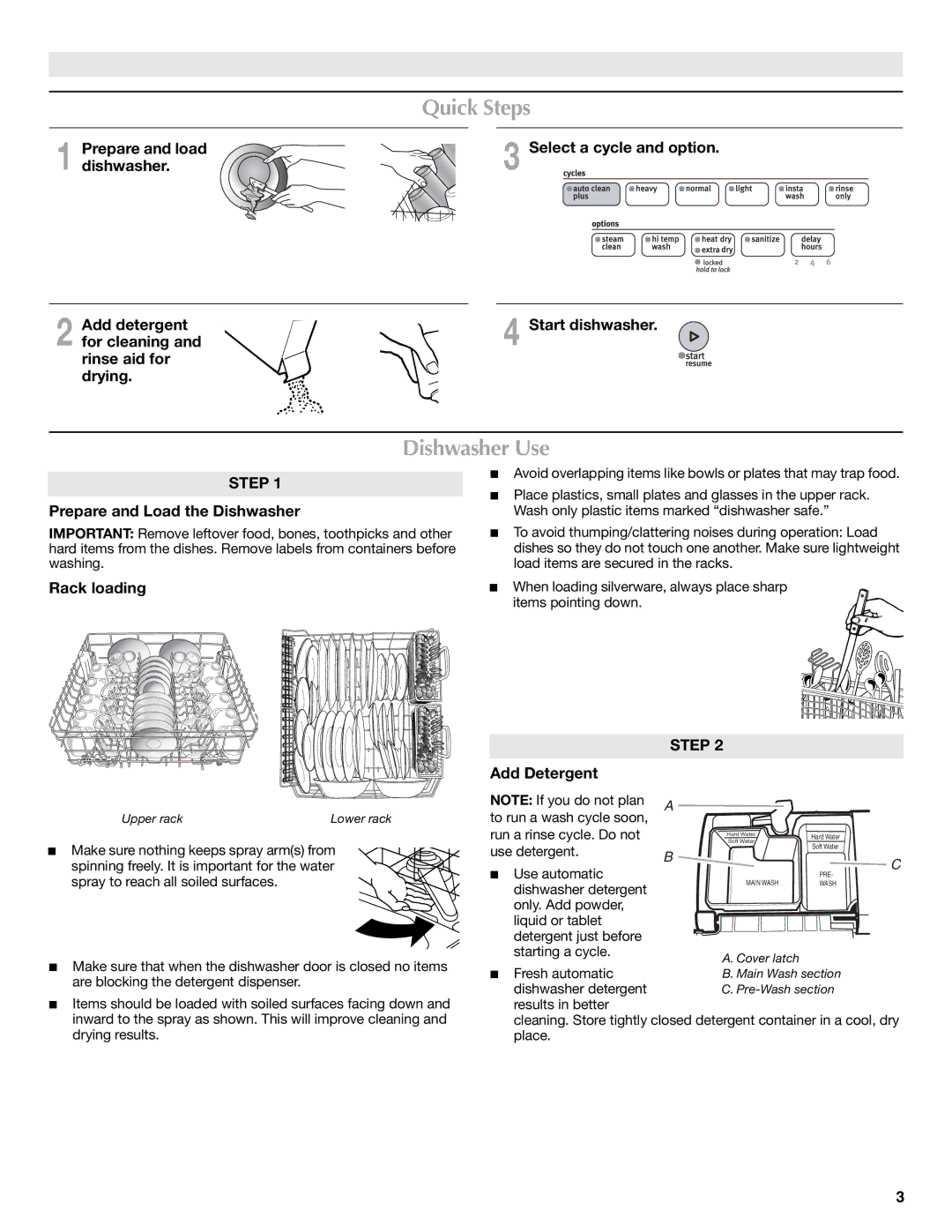
| Quick Steps | |
Prepare and load | 3 | Select a cycle and option. |
1 dishwasher. |
| |
Add detergent | 4 | Start dishwasher. |
2 for cleaning and |
|
rinse aid for drying.
Dishwasher Use
STEP 1
Prepare and Load the Dishwasher
IMPORTANT: Remove leftover food, bones, toothpicks and other hard items from the dishes. Remove labels from containers before washing.
Rack loading
■Avoid overlapping items like bowls or plates that may trap food.
■Place plastics, small plates and glasses in the upper rack. Wash only plastic items marked “dishwasher safe.”
■To avoid thumping/clattering noises during operation: Load dishes so they do not touch one another. Make sure lightweight load items are secured in the racks.
■When loading silverware, always place sharp
items pointing down.
STEP 2
Add Detergent
Upper rack | Lower rack |
■Make sure nothing keeps spray arm(s) from spinning freely. It is important for the water spray to reach all soiled surfaces.
NOTE: If you do not plan to run a wash cycle soon, run a rinse cycle. Do not use detergent.
■Use automatic dishwasher detergent only. Add powder, liquid or tablet detergent just before starting a cycle.
A
Hard Water | Hard Water | |
Soft Water | ||
Soft Water | ||
|
B![]()
![]() C
C
PRE-
WASH
■ Make sure that when the dishwasher door is closed no items | ■ | Fresh automatic | B. Main Wash section | |
are blocking the detergent dispenser. | ||||
| dishwasher detergent | C. | ||
■ Items should be loaded with soiled surfaces facing down and |
| |||
| results in better |
| ||
inward to the spray as shown. This will improve cleaning and |
| cleaning. Store tightly closed detergent container in a cool, dry | ||
drying results. |
| place. |
| |
3
